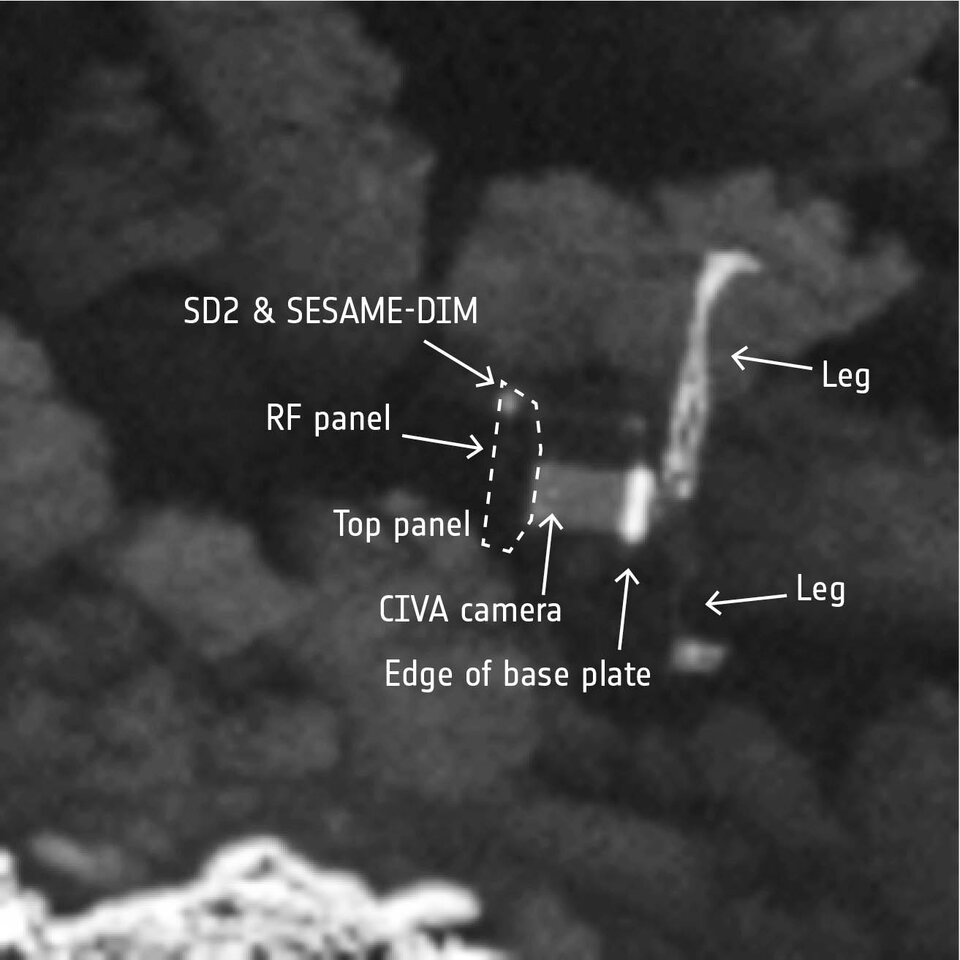Less than a month before the end of the mission, Rosetta’s high-resolution camera has revealed the Philae lander wedged into a dark crack on Comet 67P/Churyumov–Gerasimenko.
The images — taken on 2nd September by the OSIRIS narrow-angle camera as the orbiter came within 2.7km of the surface — clearly show the main body of the lander, along with two of its three legs.
The images also provide proof of Philae’s orientation, making it clear why establishing communications was so difficult following its landing on 12th November 2014.
Philae was last seen when it first touched down at Agilkia, bounced and then flew for another two hours before ending up at a location later named Abydos, on the comet’s smaller lobe.
After three days, Philae's primary battery was exhausted and the lander went into hibernation, only to wake up again and communicate briefly with Rosetta in June and July 2015 as the comet came closer to the Sun and more power was available.
However, until today, the precise location was not known. Radio ranging data tied its location down to an area spanning a few tens of metres, but a number of potential candidate objects identified in relatively low-resolution images taken from larger distances could not be analysed in detail until recently.
The discovery comes less than a month before Rosetta descends to the comet’s surface. On 30th September, the orbiter will be sent on a final one-way mission to investigate the comet from close up.

